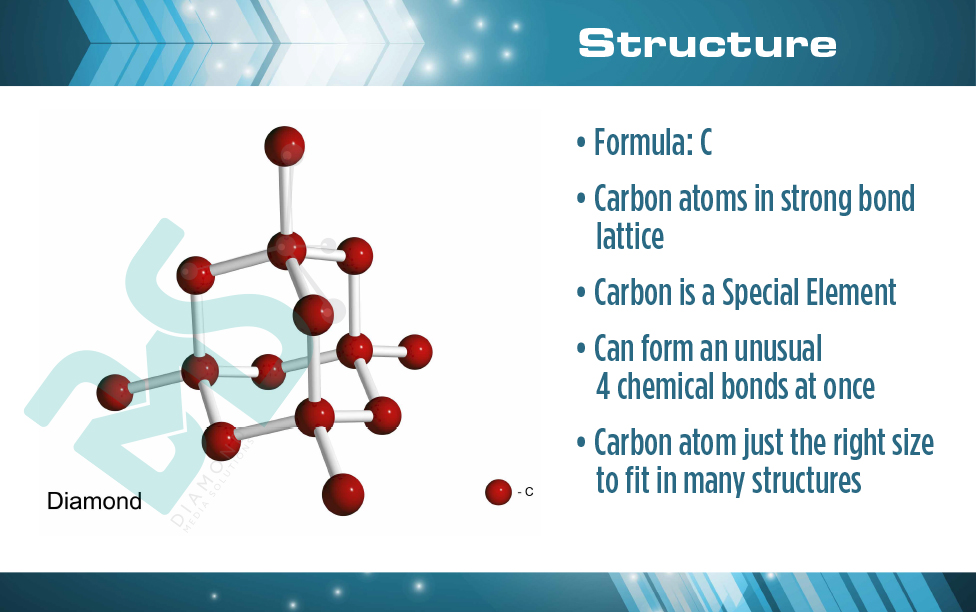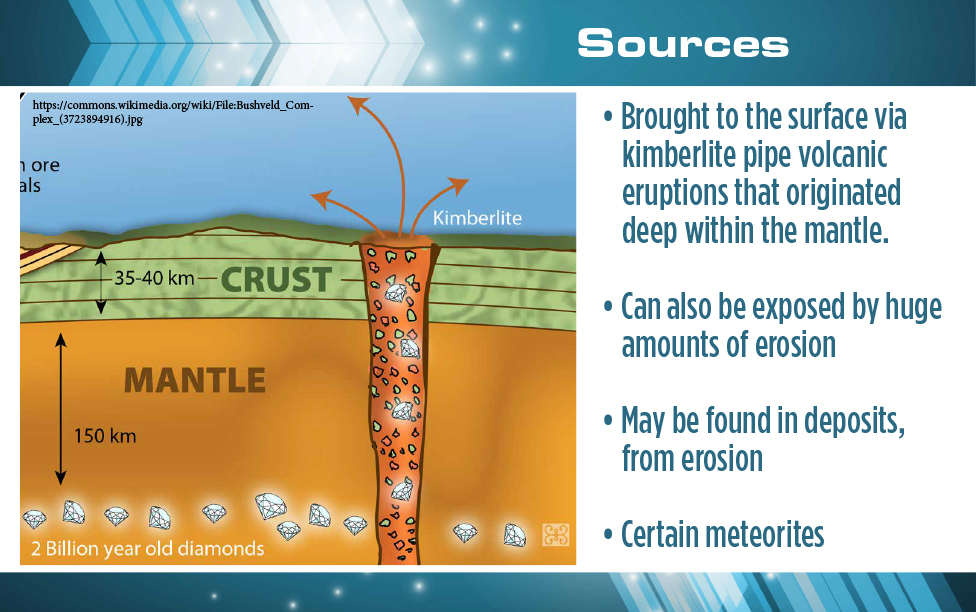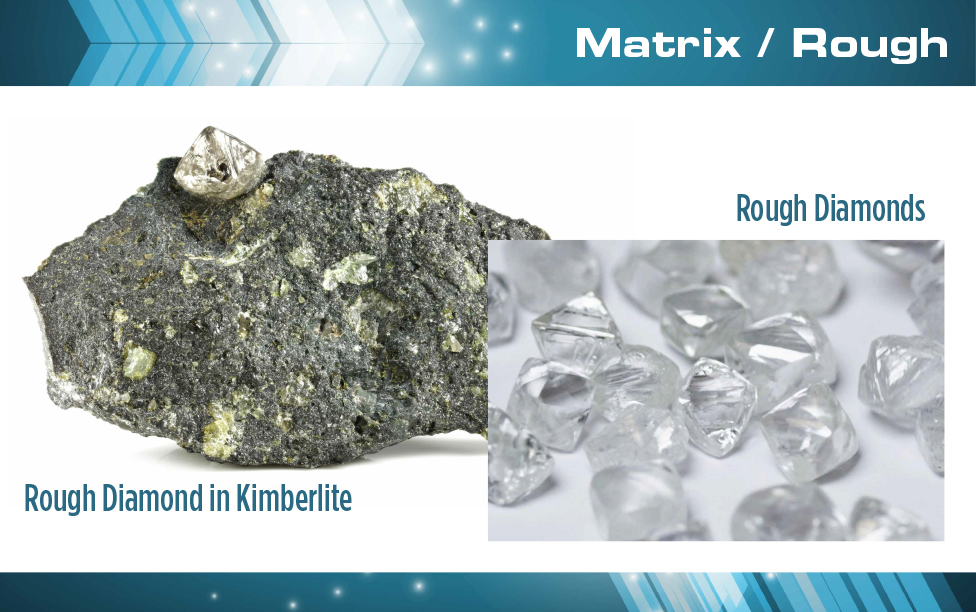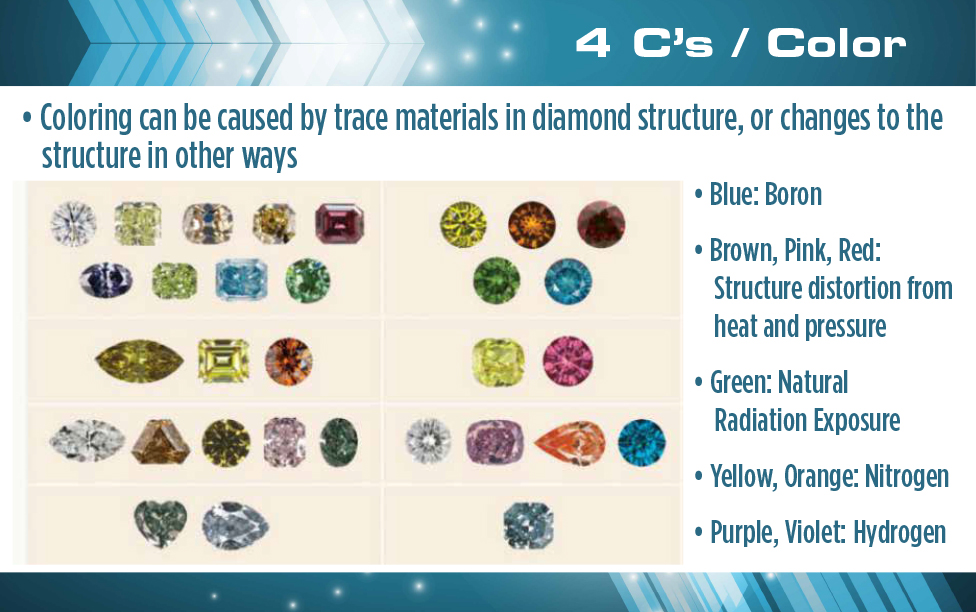In mid-2019, Jayme hill, COO of Diamond Media Solutions, embarked on a re-branding that would reflect the exciting growth and expansion the company was undergoing. The diamond had long been the company’s symbol, and in her consideration of how she wanted that symbol to be represented for the re-brand, she found herself considering my degree in geology. I had taken a sabbatical from the company and completed the degree in 2016. Myself, Jayme, and our creative director Keith explored the molecular structure of a diamond and found it to be a great match for the principles and aspirations of Diamond Media Solutions. I found this to be true also, as I was able to offer a Diamond Discussion that not only educated my fellow employees with a bit of geological knowledge, but underlined just what a great symbol a diamond is for our company and how it can inspire how we conduct our business.
The Diamond structure is composed of one element, Carbon “C”. Carbon is a special element because it can form an unusual four chemical bonds at once, making it extremely versatile in creating a wide range of molecules. It creates an extraordinarily strong bond lattice, which accounts for the diamond’s special properties. And this is why we choose the structure of a diamond as the inspiration for our logo!
Diamonds form deep in the Earth, about 100 miles below the surface, in extreme heat and pressure. They are brought to the surface typically by volcanic eruptions, or by exposure when there is a huge amount of erosion in an area.
The diamond is widely known as the hardest natural substance. It also beautifully glitters when cut into facets due to it’s adamantine, or extra bright, lustre. Nothing else in the natural world but another diamond can scratch it.
Diamonds are valued by the 4 C’s, color, cut, clarity, and carat. The coloring of a diamond is caused by trace materials in the diamond’s atomic structure, or a distortion of the structure. Lack of any of these creates the clear diamond. The cut refers to how a craftsman has shaped the raw diamond into facets that catch and reflect the light. Special diamond-dusted tools are used for this. Clarity refers to how many inclusions, or irregularities, are in the cut diamond. Finally, carat is how a diamond is weighed. The higher the carat weight, the larger the diamond.
It is not widely known that most diamonds are not used for jewelry. 80% of diamonds are used in industrial ways such as cutting, drilling, grinding, polishing, research, and technology.
#DiamondLife: I believe we at Diamond Media Solutions relate our logo and the structure of the diamond to our values and principles in business and in our personal lives in the following ways:
Carbon Structure: Be open to new partnerships, be flexible and adapt to your surroundings, cultivate a strong sense of teamwork and keep solid interconnections.
Pressure & Heat Formation: Show endurance, transform as a result of outside forces, use these experiences to improve your structure and become stronger.
Properties: Show superior strength and durability, express brilliance that stands out from others.
Industrious: Work hard, play hard, always demand exceptional quality and usefulness.
The four C’s: Strive for the highest quality in all ways of measurement. Create and produce products with long term value and client satisfaction.
Color: Utilize outside elements to enhance products in a different direction.
Cut: Use careful planning and precision execution with technology for the best results.
Clarity: Be as transparent as possible with our clients and with each other.
Carat: Put the weight of so many years of combined experience into innovation and efficiencies.

Theresa Maye is the Production Manager for Diamond Media Solutions.

















No Comments
Sorry, the comment form is closed at this time.